The pitch
Seedspace is a garden share application that connects urban dwellers to green spaces. It allows users to search for and rent gardens from the hosts who are willing to share. It rebuilds connections within urban communities, and provides an alternative local solution of food produce, reducing carbon footprint by minimizing transportation and trading activities. This app has 3 potential user groups: New User, Gardener, and Host.
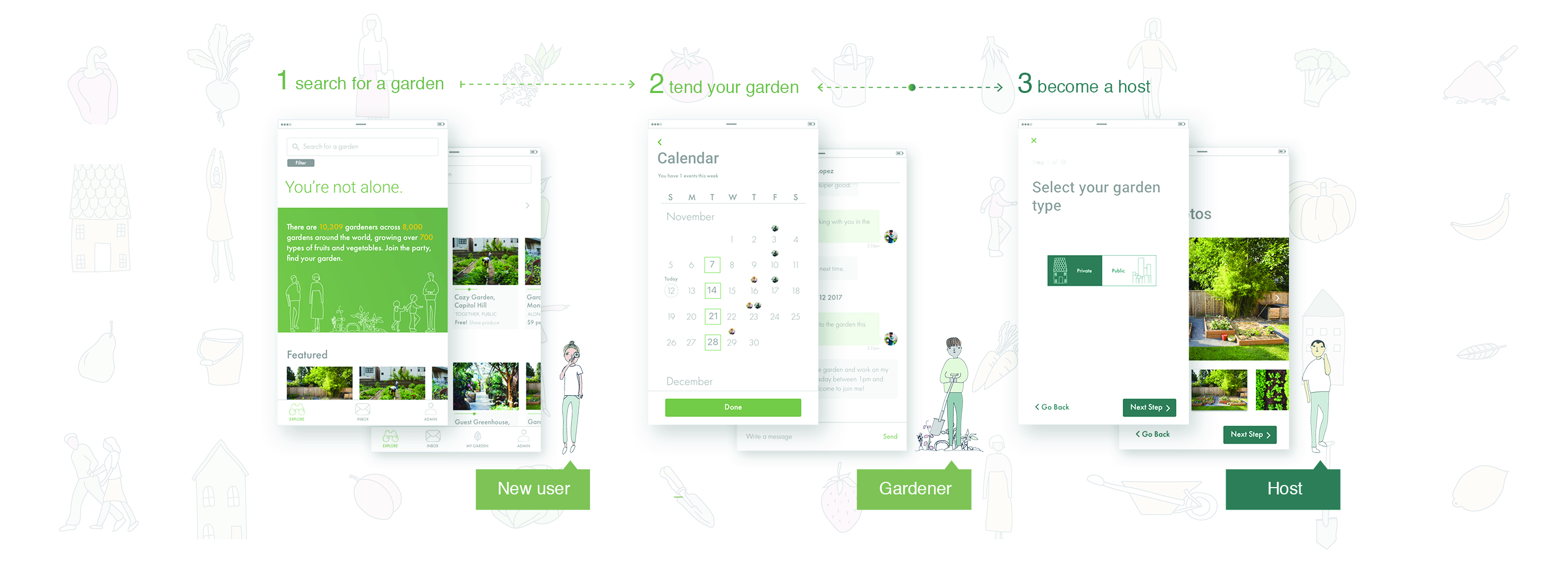
*New User
A new user can search gardens nearby, and send an application to a Host when they are ready to join the community. It is possible to be just a wanderer in the Seedspace community without ever becoming a Host or a Gardener, through education and exploration.
Landing
Onboarding
*Gardener
After a successful application, gardeners can access a dashboard with all information needed for tending a garden. It includes stats about their garden and their ongoing visits. Through the dashboard, gardeners can also set their garden visiting schedule, and communicate with their hosts or other gardeners through the message function.
Scheduling
Messaging
*Host
Users who are willing to share their garden can apply to become hosts. Once approved, they can access the host dashboard, which allows them to post gardens, check garden stats, and approve applications. When posting, hosts can setup very specific requirements for prospected gardeners, including preferred plant type, gardener visiting frequency, and minimum gardening period.
Dashboard
Garden profile + adding garden
The challenge
We live in a rapidly urbanizing world, where technology is used to advance society, but often leaves us disconnected from each other. We have dismissed nature and shifted our values, in search of progress. It’s time to change our focus back to the land and our community in order to grow a smart future together.
"How might we reconnect urban dwellers back to the land and the food they consume?"
Community Garden Shortage
Through our secondary research, we discovered that many cities are facing a “community garden shortage”, which keeps many residents away from gardening in urban areas. For example, community gardens, known as P-patches, in Seattle, generally has a long waiting list. Over 45% of the gardens have a wait time longer than 1 year.
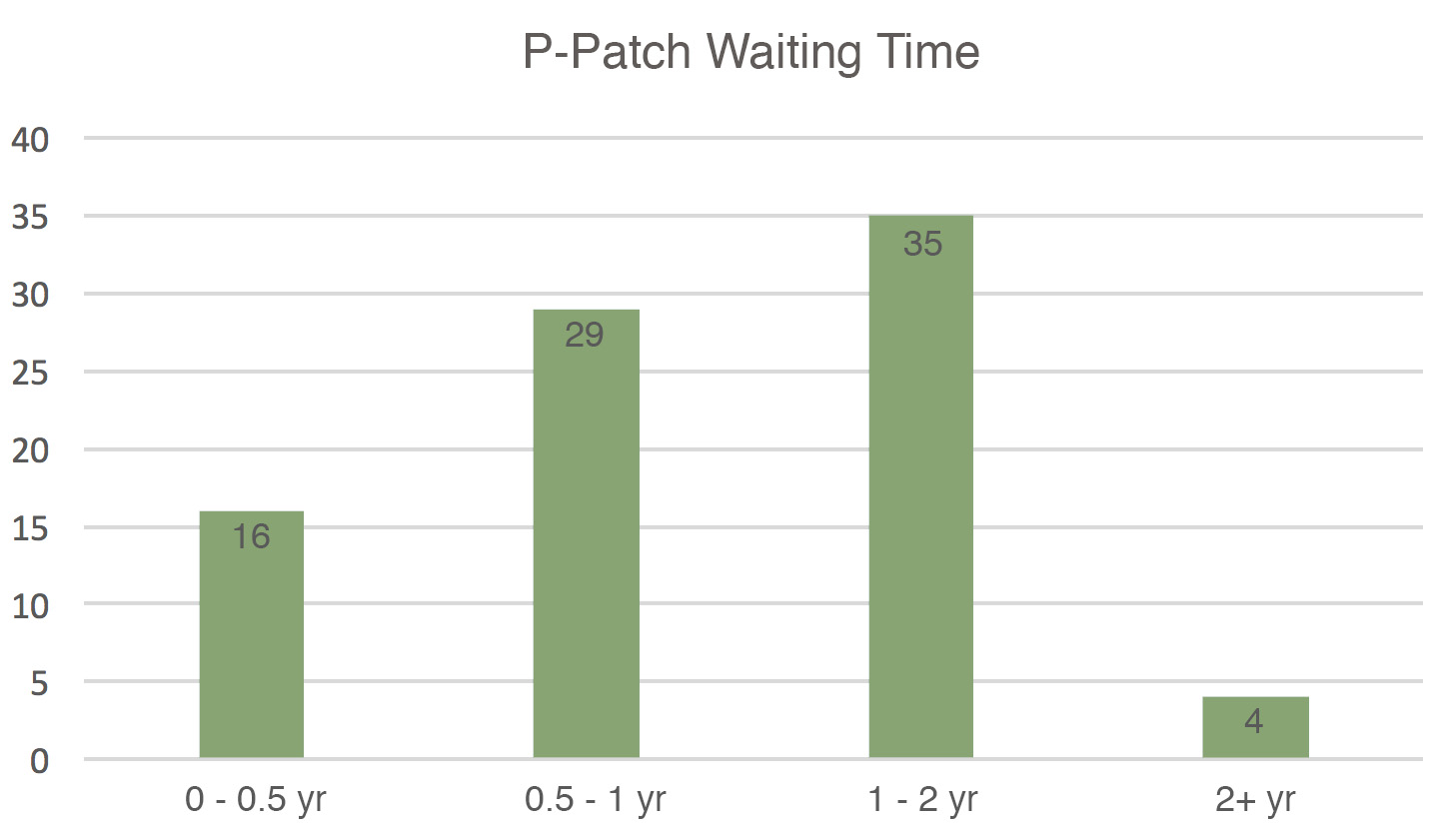
Design process
*Storyboard
We crafted stories in order to ground initial ideas in context and flesh out the high level thinking. In doing so, we were able to humanize our ideas and consider the broader interactions that would need to incorporated. Below is a storyboard we made that most closely aligns with our final design solution.
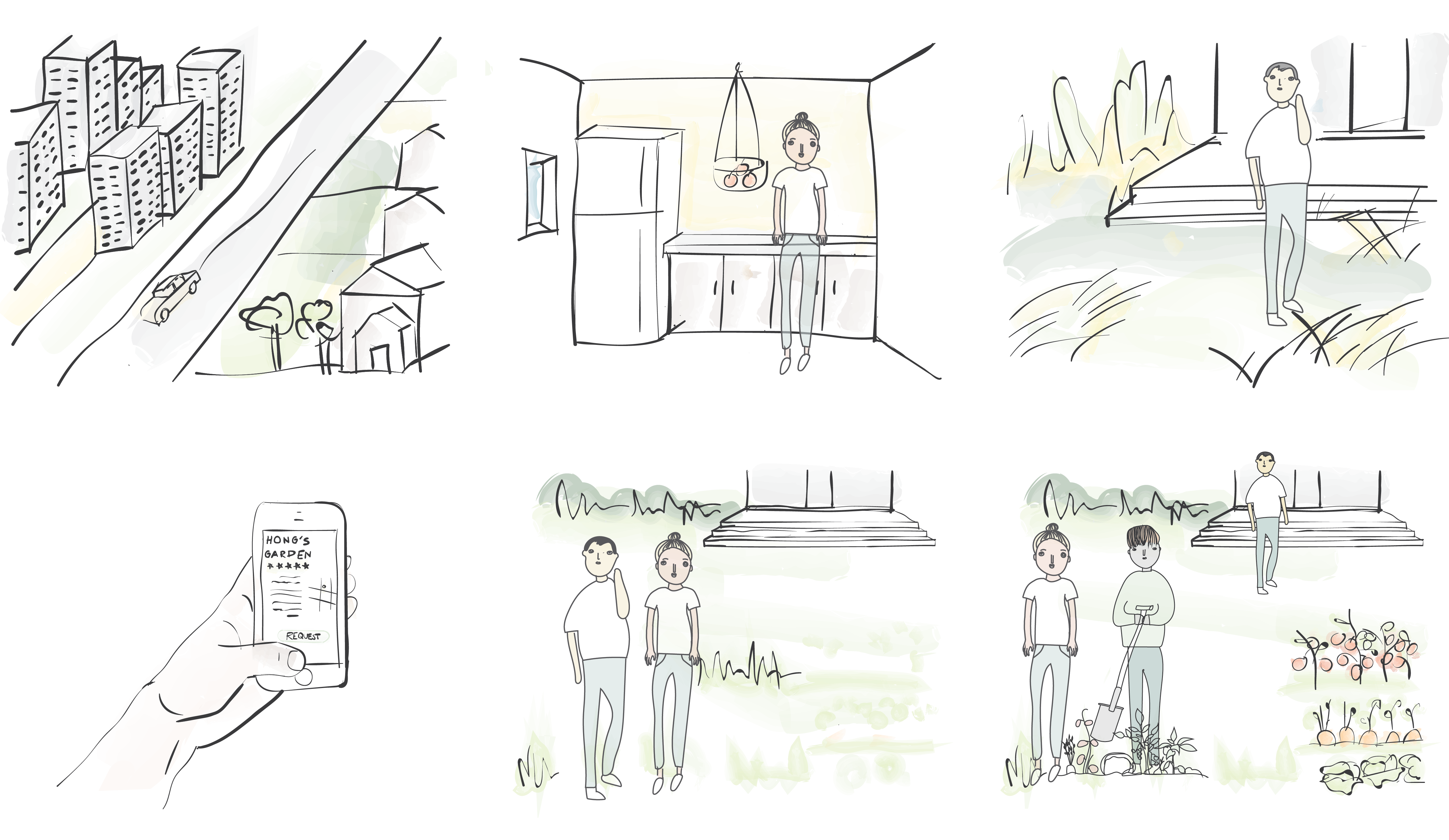
*Paper prototype
We crafted and tested our concept with five participants using paper prototypes and Think Aloud protocol. Our goal was to better understand user needs and goals.
Key insights
1. The concept makes most sense in an urban environment
2. Knowing how engaged a “Gardener” might want to be is an important factor to consider
3. Starting a system from scratch poses trust issues
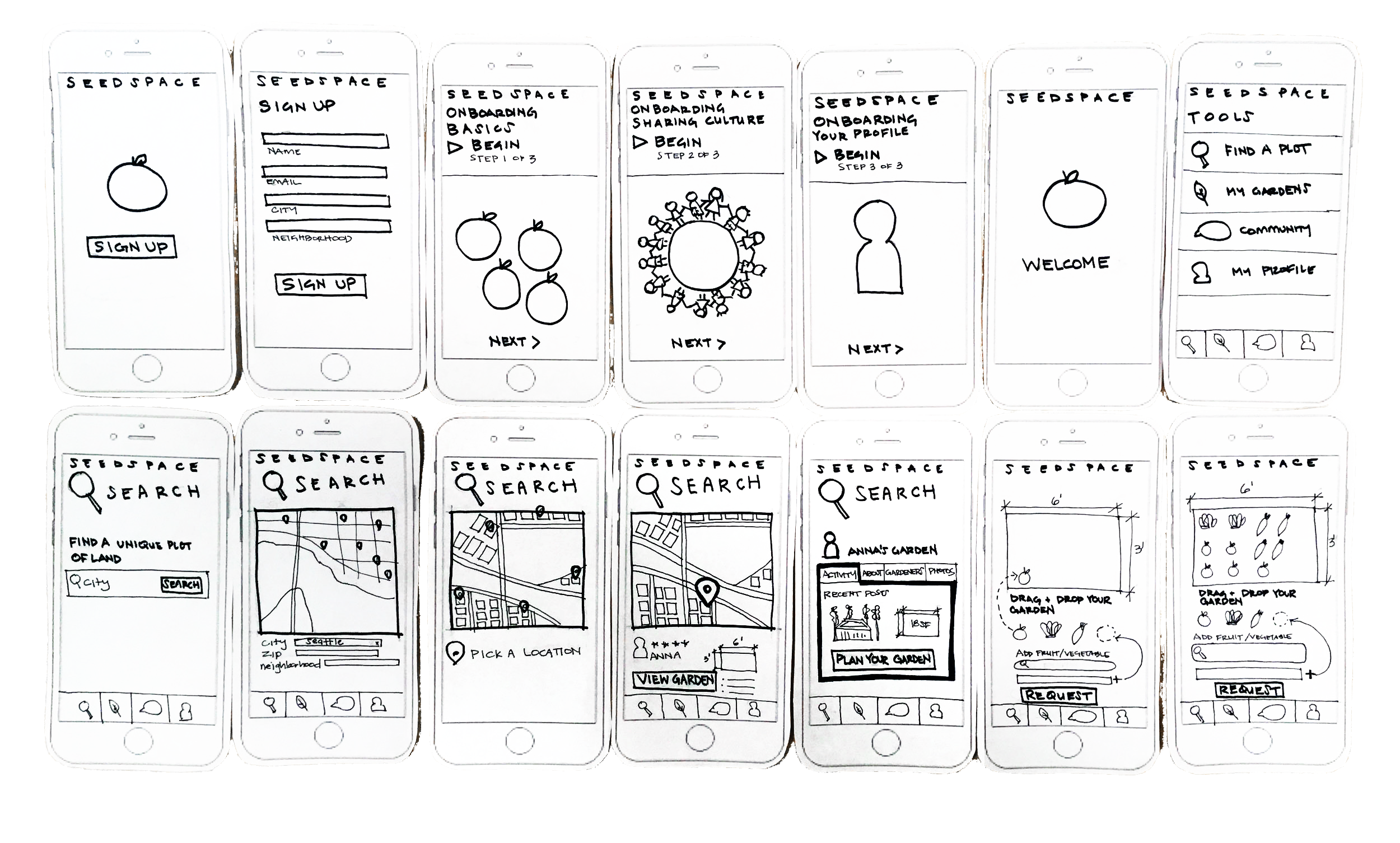
*Click-through prototype
For our second round of prototype evaluations, we tested a click-through, low-fidelity prototype with five participants. The goal of the testing sessions was evaluative rather than generative. Sessions were focused on assessing task completion, with follow-up questions around the difficulty of the tasks and any thoughts around moments of confusion or mismatched expectations.
Key insights
1. Users want more control over the search function
2. User experience for Host, Gardener and Wanderer should be consistant
3. Potential users who are both gardeners and hosts may require a role-switch function
4. Major user flow should be emphasised, and some functions can be eliminated after careful evaluation
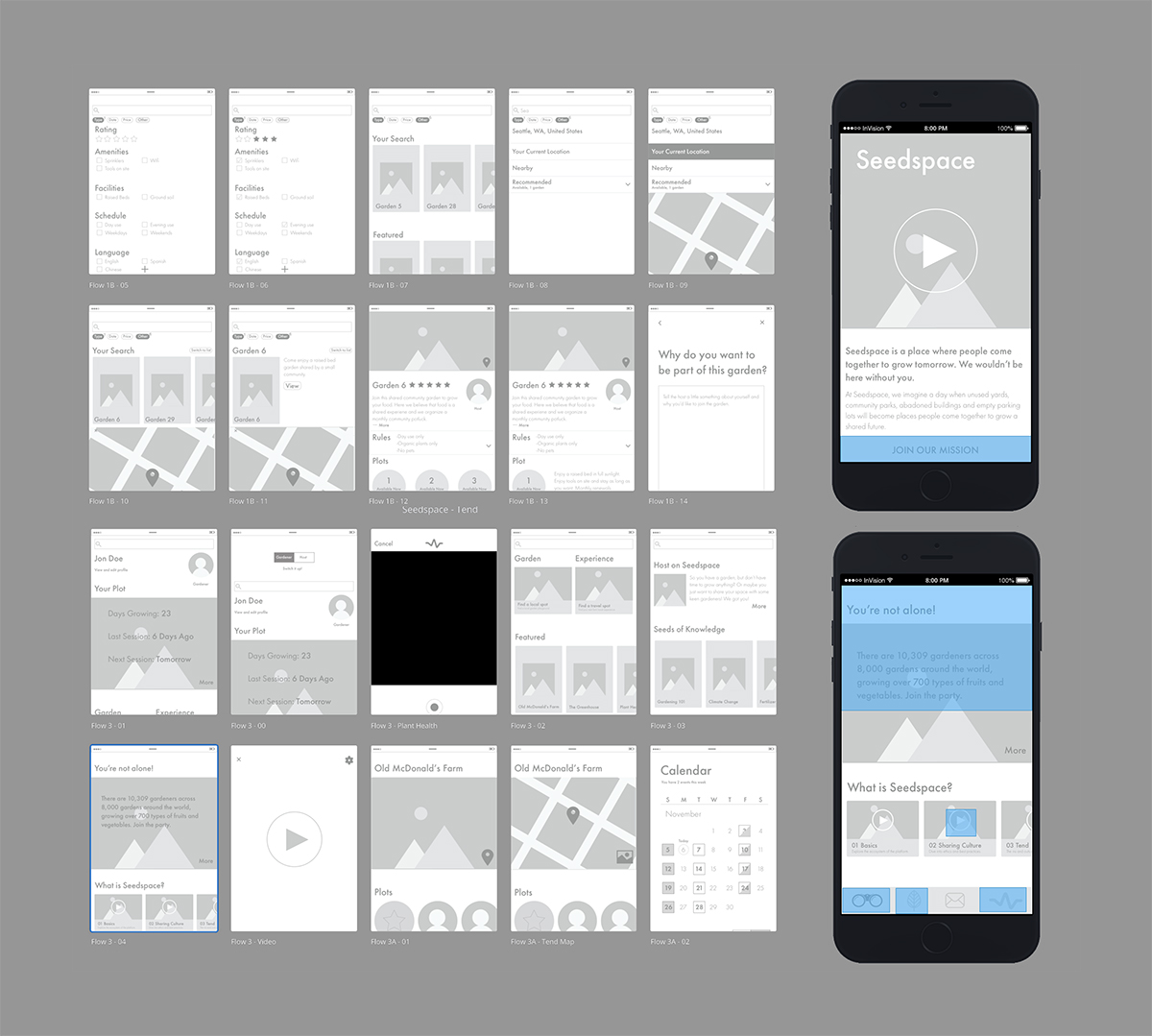
Final design
*Application map
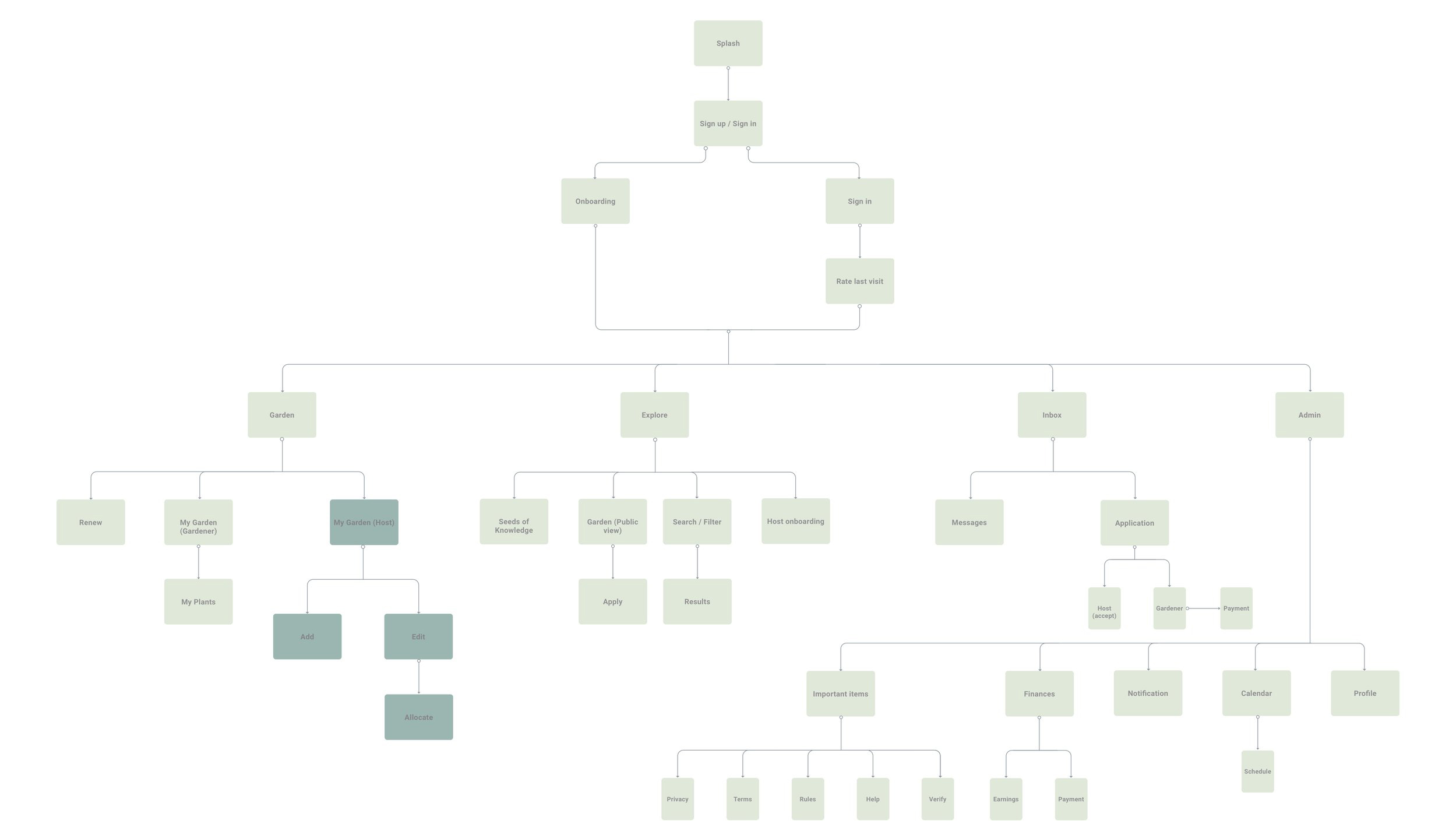
*User flow
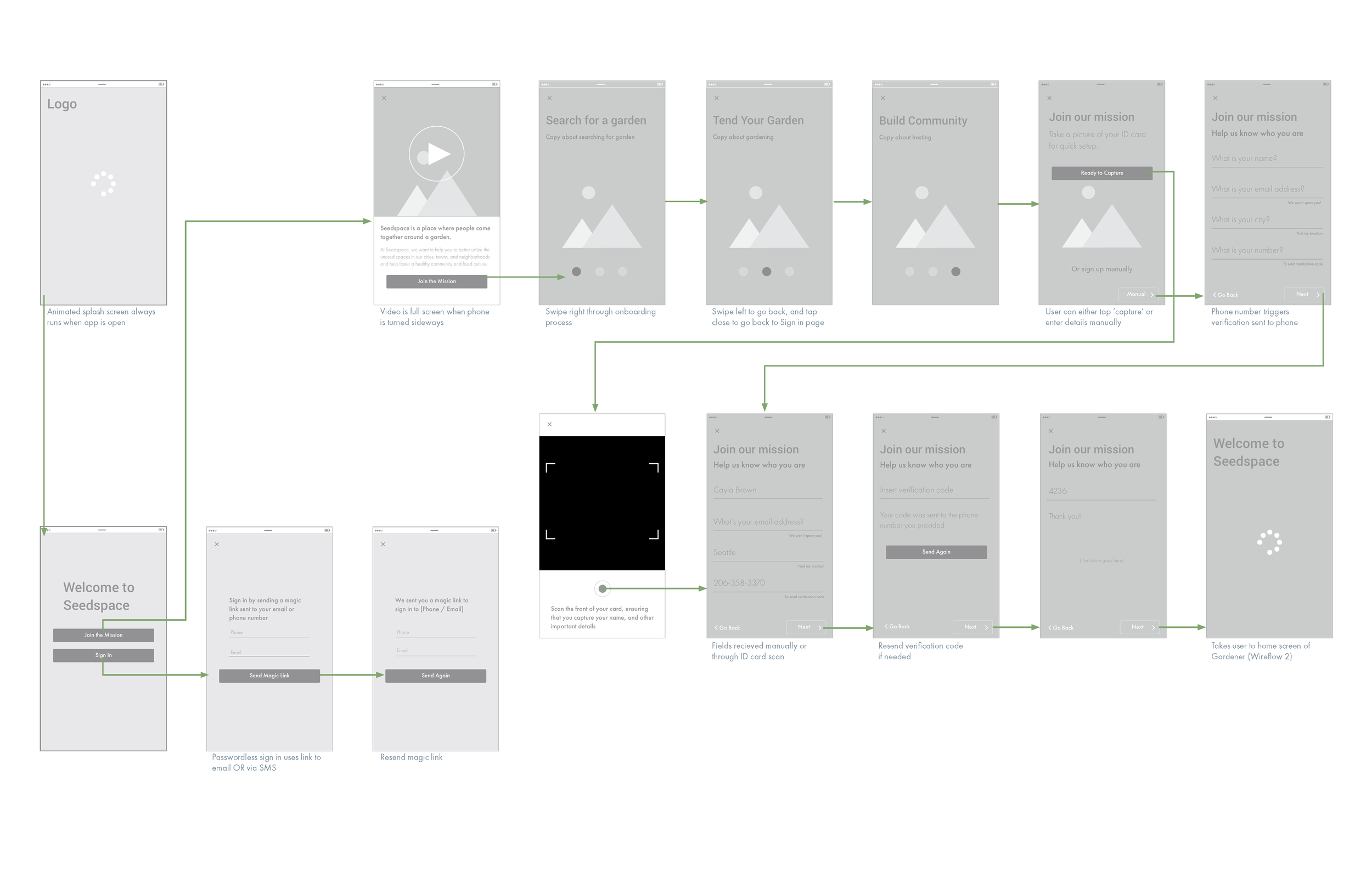
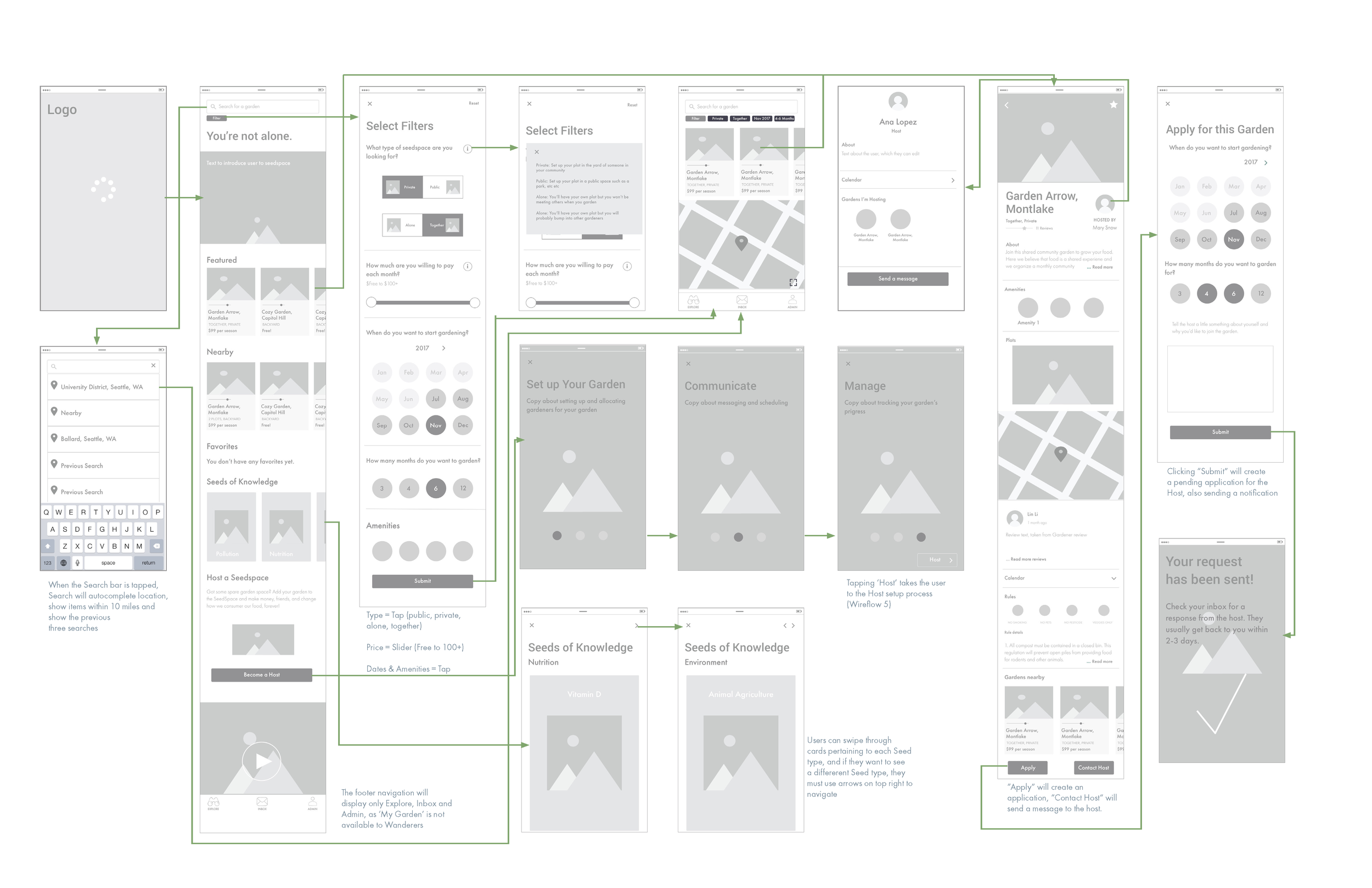
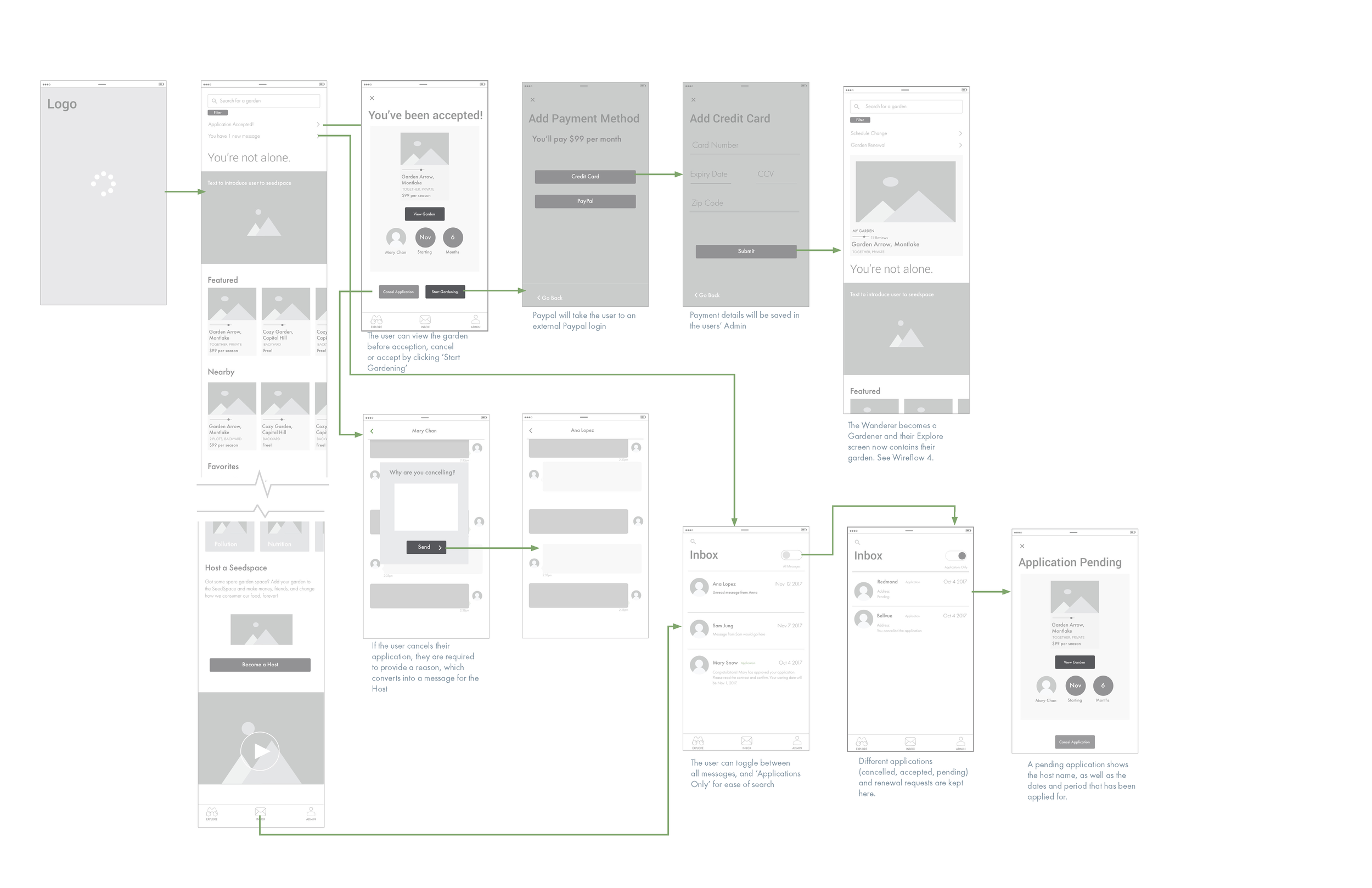
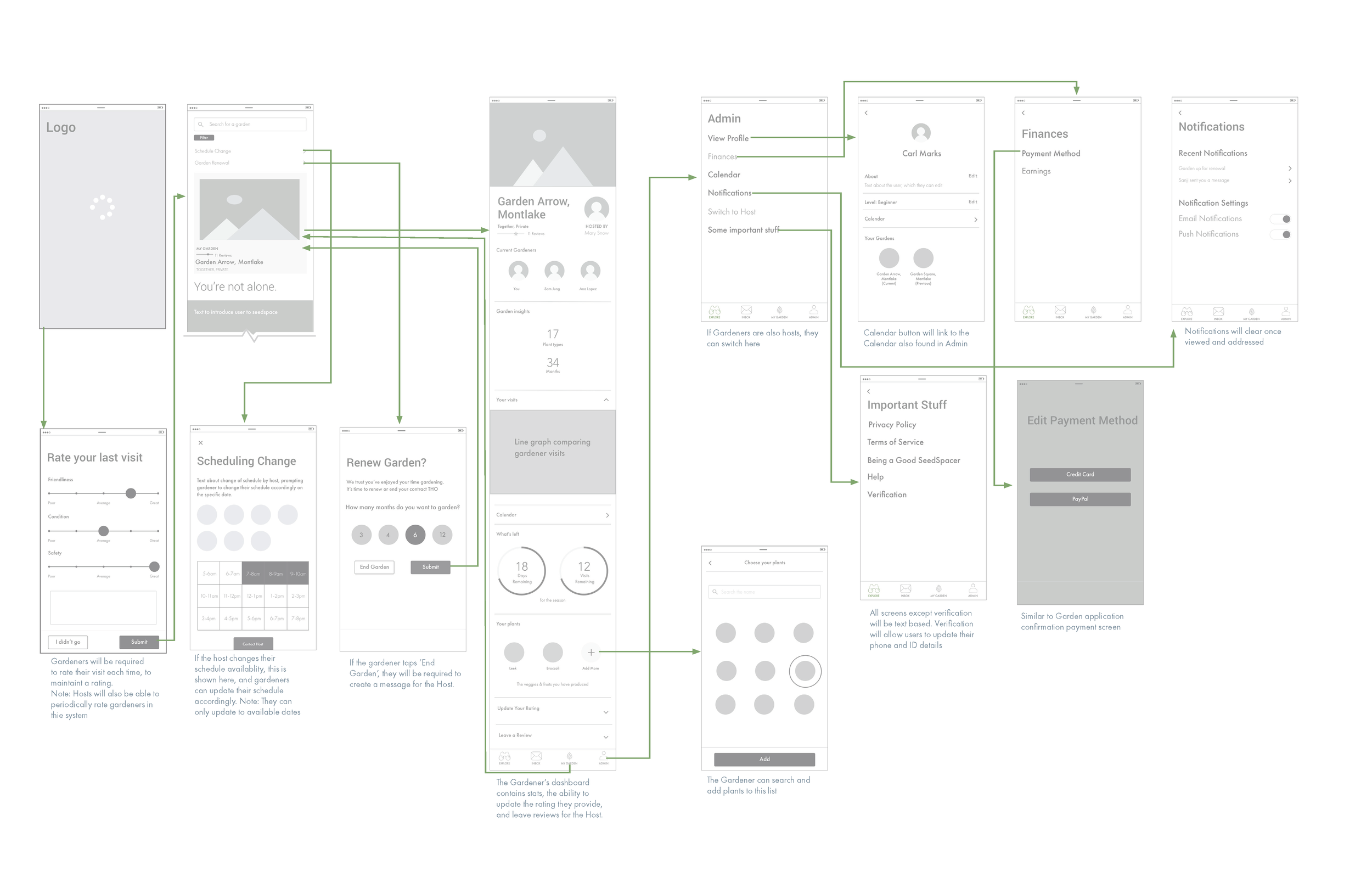
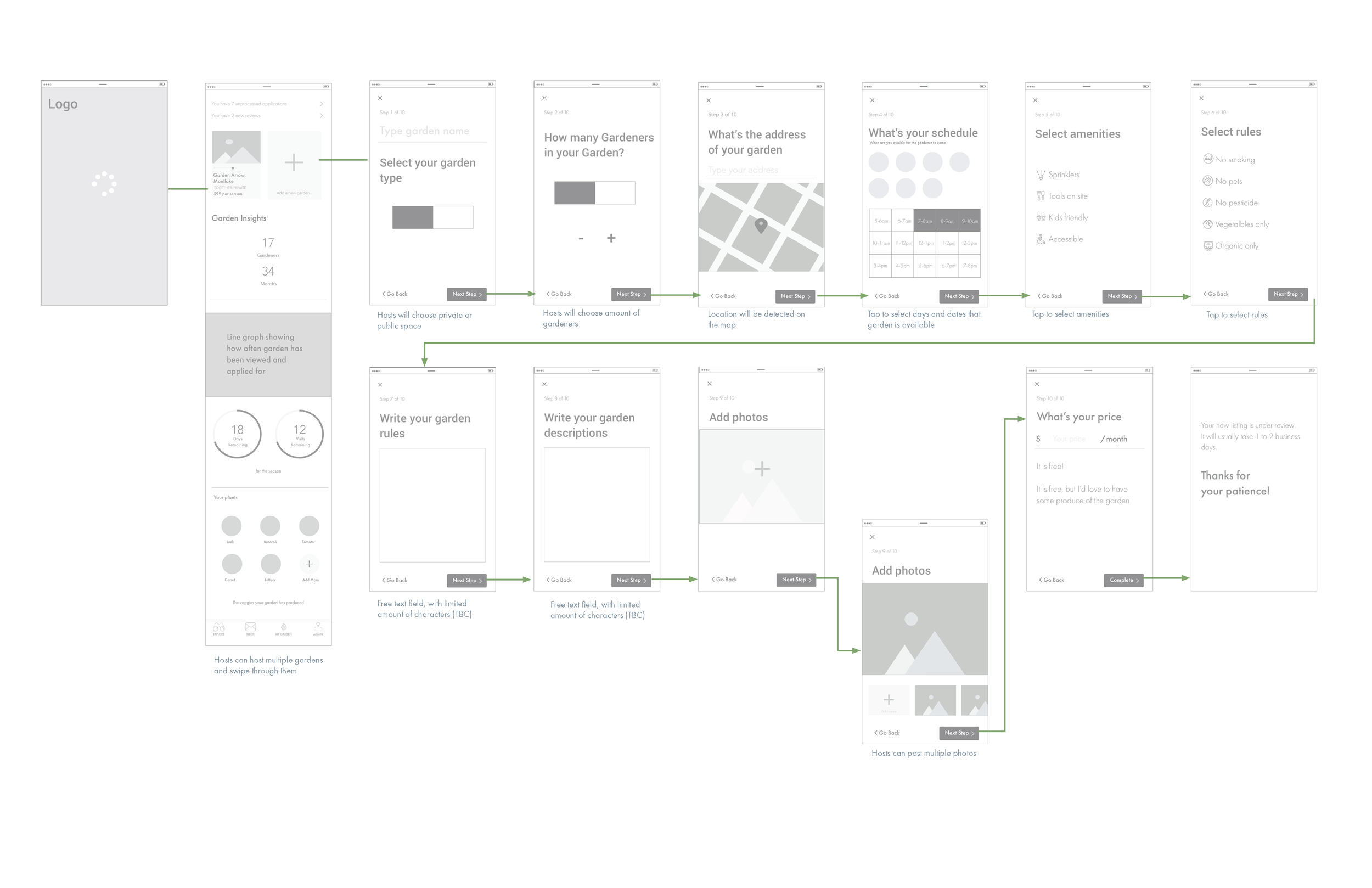
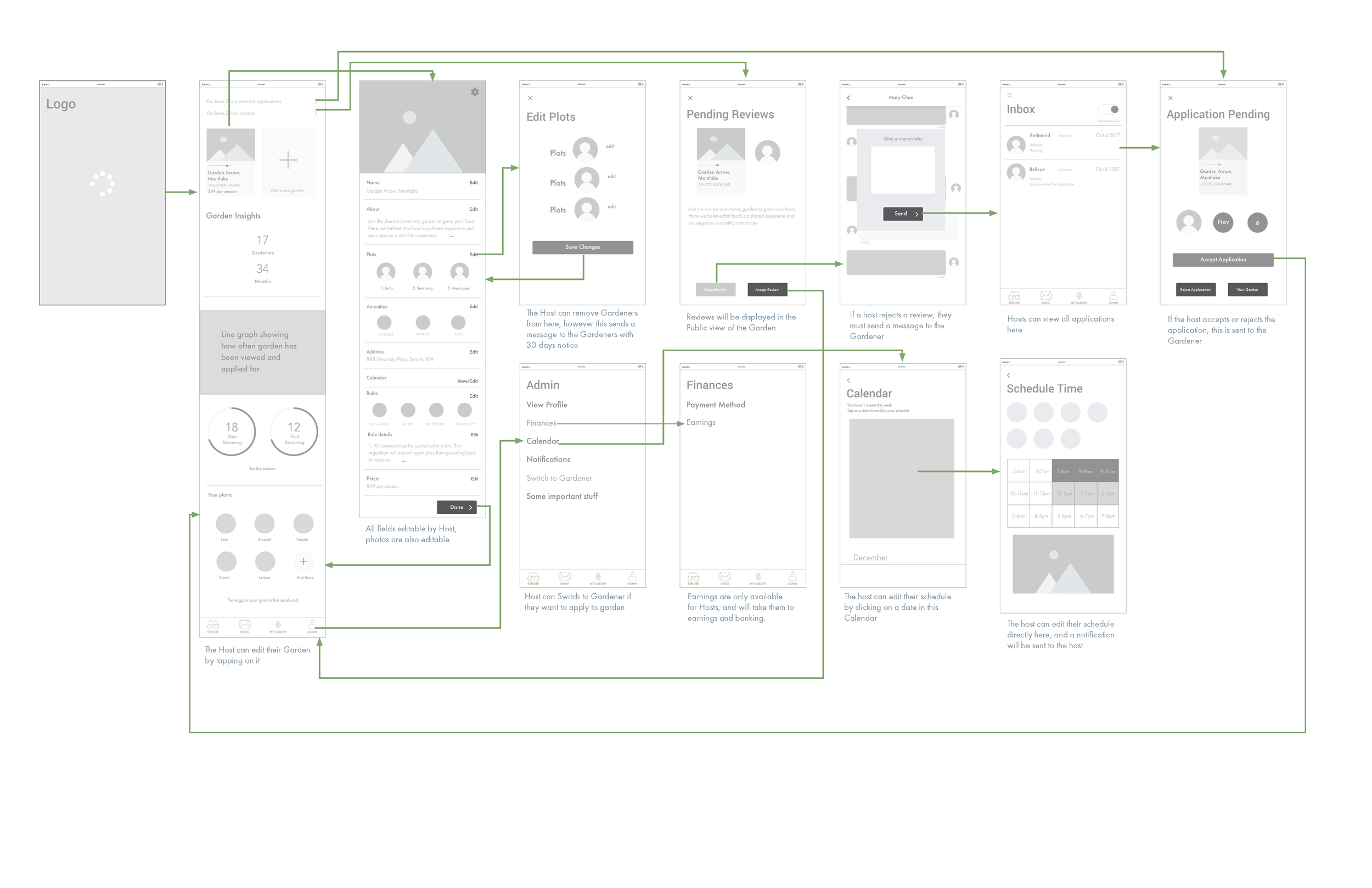
*Selected hi-fidelity screens
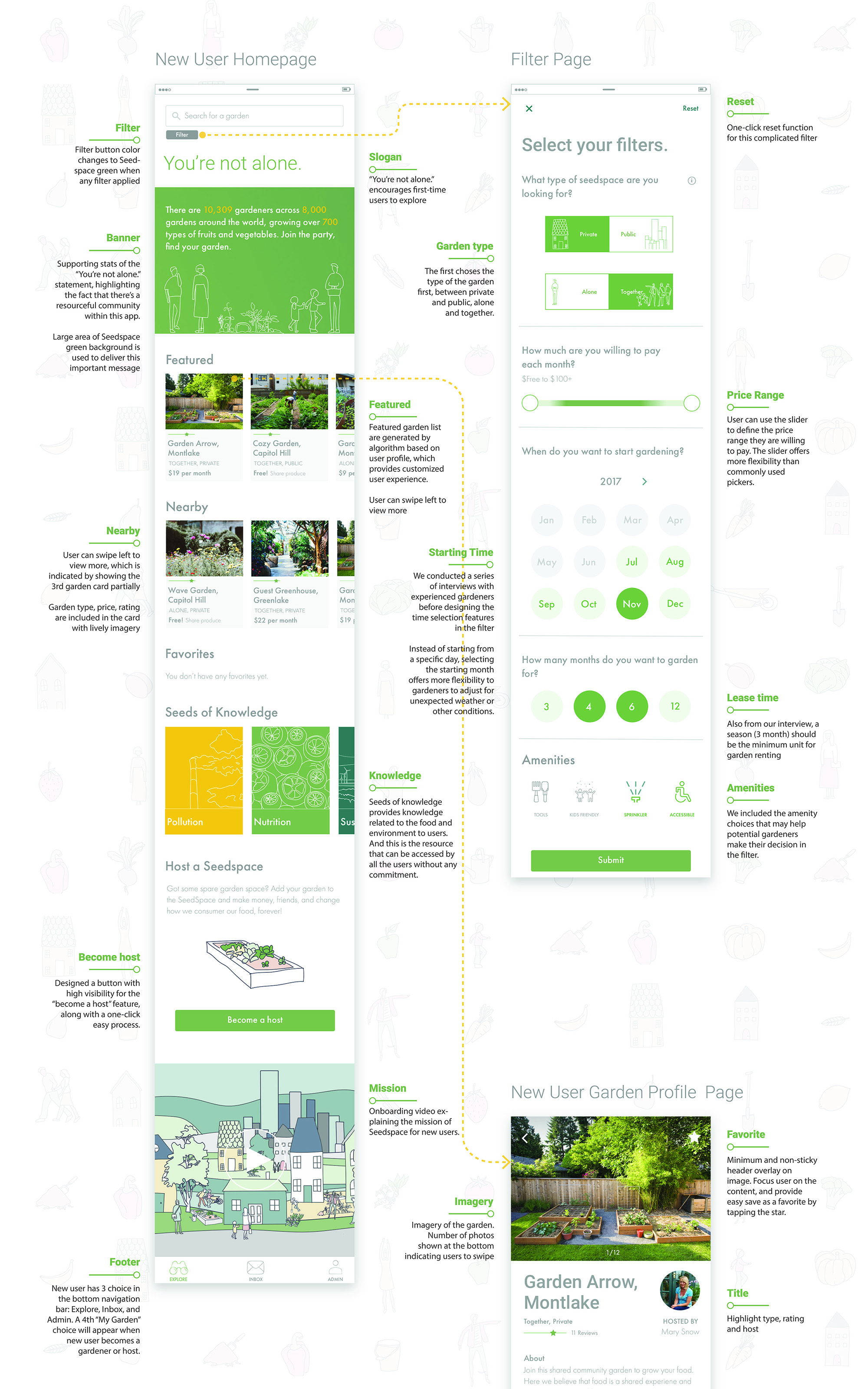
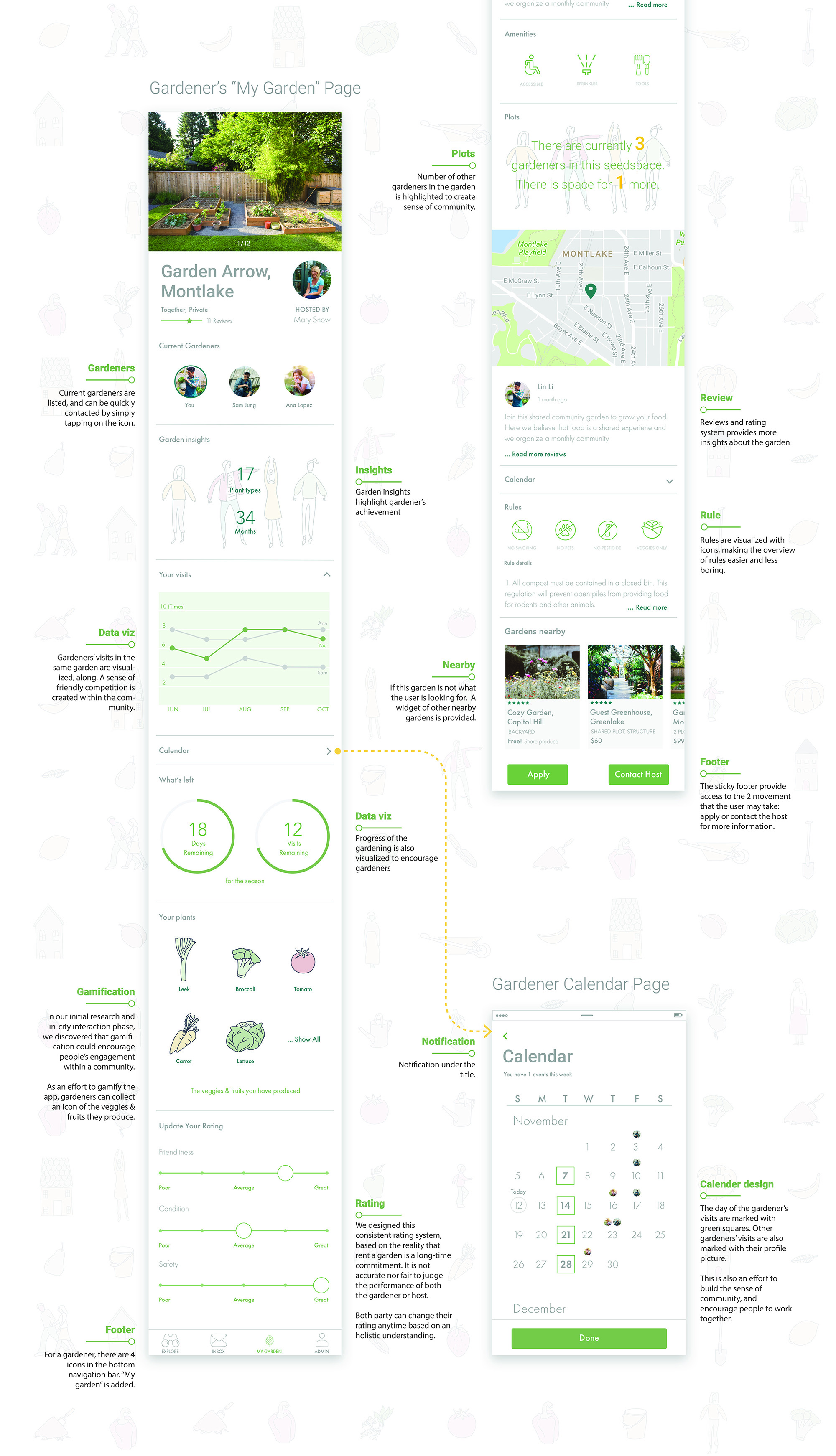
Reflection
Takeaway: Creating a product from scratch within 10 weeks was an intensive but very valuable learning experience. Rapid research, ideation and design decision making significantly improved our skill of balancing between the broad scope envisioned and tight timeframe.
Next Steps: We will explore the design opportunities in a few more areas. For instance, we have the vision to create “Seeds of Knowledge”, a gamified and interactive educational function within the app, to users who are neither a host or gardener. We also would like to provide additional sharing experience associated with food produce.




